Grazie Gianna, ho fatto qualche ricerca ma non ho concluso molto grazie al mio pessimo inglese (quasi zero  ). Riporto quello che ho letto dal libro Coryphantha di F.Dicht e Adrian D. Luthy: ). Riporto quello che ho letto dal libro Coryphantha di F.Dicht e Adrian D. Luthy:
Pag 160 - Coryphantha cornifera
Body solitary, rarely sprouting, globose, 6 cm
high and 8 cm diameter,dull olive-green, apex
depressed, with white wool, fibrous roots. Tubercles
in 5 and 8 series, conical, rhomboid at
the base, obliquely cut, grooved above, width
at the base 12–16 mm,height 8–14 mm,length
of upper surface 8–10 mm, of lower surface
12–18 mm. Axils in youth with white wool.
Areoles oval, 3 mm long, 1.5 mm wide when
central spine absent, round, 2 mm diameter
when central spine present, in youth with
white wool, pectinate.Radial spines 12–18, irregualrly
radiating, horizontal, interwoven,
thick needle-like, straight or slightly curved,
occasionally 3–4 thinner spines more densely
set, all 14–16 mm long, horn-coloured to yellowish-
white, sometimes darker tipped. Central
spines 0–1 (–4), the dominant spine
straight, porrect, curved downward, the other
two centrals protuding laterally and curved,
all subulate, 14–18 mm long, dark brown, becoming
grey from the base.
Pag. 150 - Coryphantha pallida Britton & Rose
subsp. pallida
Body solitary, later also forms groups by
sprouting, semiglobose to globose, 7–9
cm diameter, 4–6 cm high, dull olive-green,
apex slightly depressed, very white-woolly.
Tubercles in 8 and 13 or 13 and 21 series,
closely set, flattened conical, slightly bulging,
edges obliquely cut, appressed, at the base
14–17 mm wide, 6–8 mm high, length of
upper surface 6–9 mm, of lower surface
13–16 mm, completely grooved with white
wool. Axils woolly. Areoles round, 2 mm
diameter, if central spines present or, without
central spines, oval, 3.0X1.5 mm, woolly.
Radial spines 13–21, about two-thirds of
them radiating to both sides and downwards,
horizontally arranged, needle-like, straight or
slightly curved, transparent, white to yellowish,
11–13 mm long, the rest more closely set
and pointing upwards, dirty white with dark
tips, longer, up to 16 mm. Central spines 0–3,
usually 1 dominant porrect, curved downwards,
sometimes also to the side, subulate,
15–17 mm long, 1–2 upper ones straight or
slightly upwards and to the sides or curved
ahead, thinner, a bit shorter, all dark brown to
black, then becoming grey from the base.
Sometimes the porrect one and/or one or
both of the two upper ones are missing.
Spero che voi riuscite a tradurlo meglio e così riuscire a scoprire quale coryphantha ho...
Domani pomeriggio posto delle foto più dettagliate delle spine.
Per ora grazie! e scusate per la lunghezza del post..
_________________
Raffaele. |
 Registrati
Registrati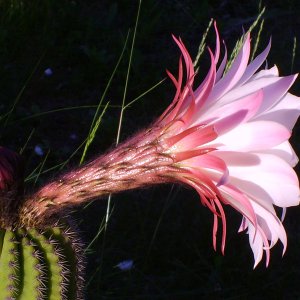
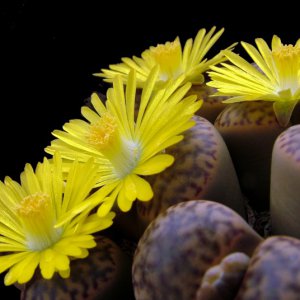
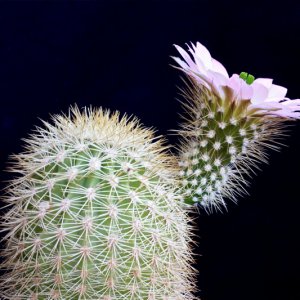

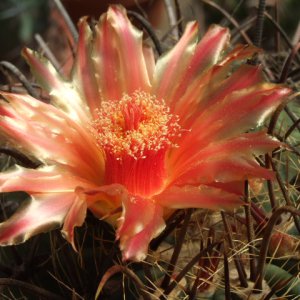
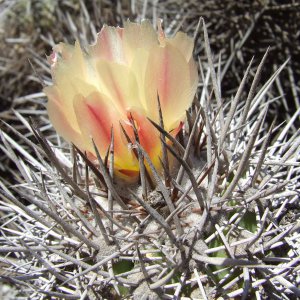












 ). Riporto quello che ho letto dal libro Coryphantha di F.Dicht e Adrian D. Luthy:
). Riporto quello che ho letto dal libro Coryphantha di F.Dicht e Adrian D. Luthy:

